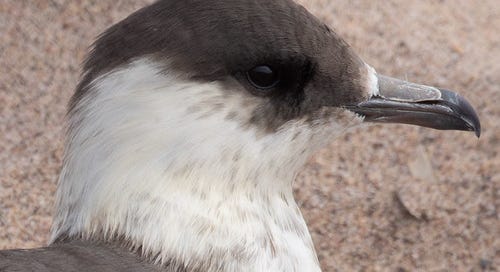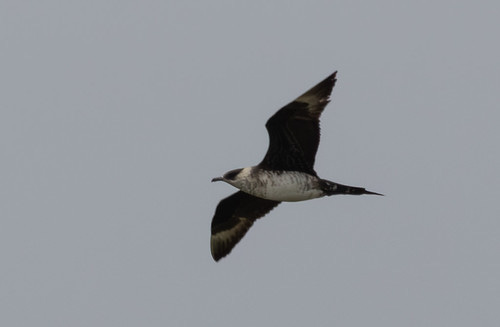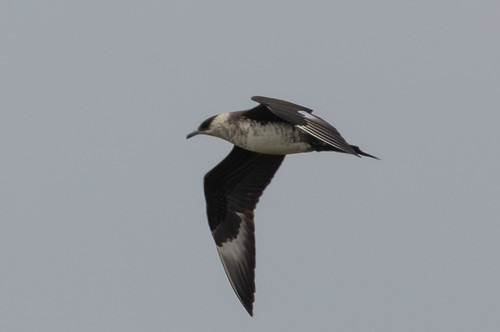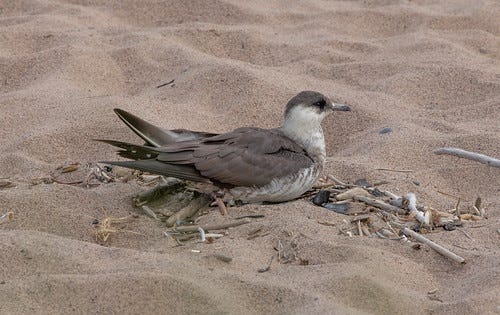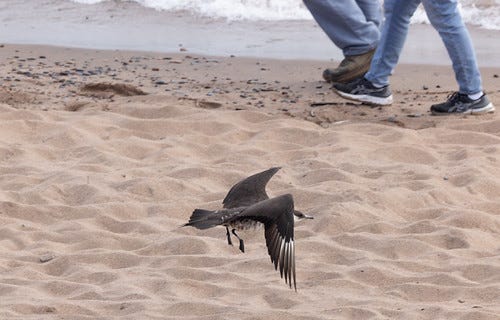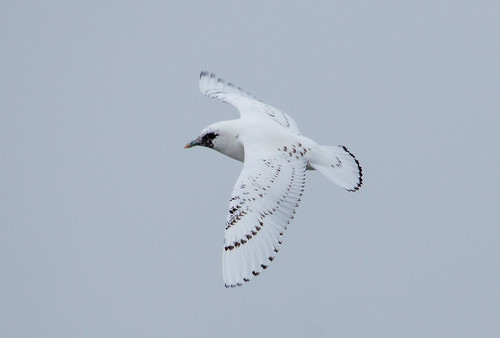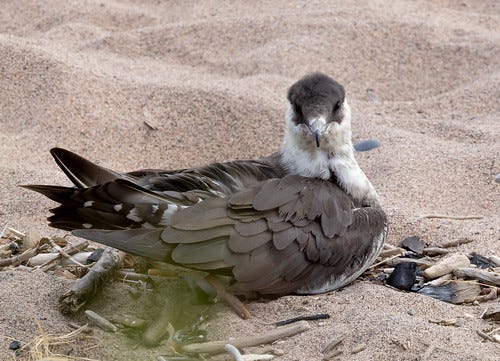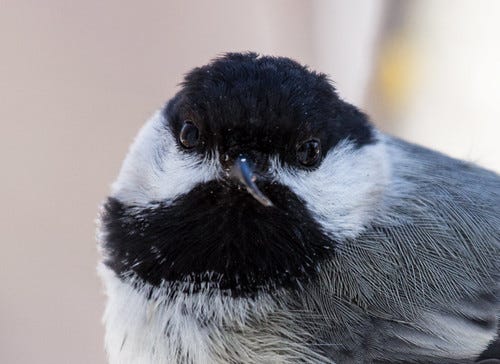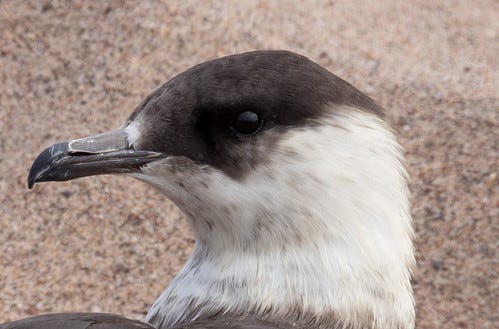Parasitic Jaeger in July?
Yet another interesting vagrant from the far north turns up in the Twin Ports.
(Listen to the radio version here.)
On Saturday, July 22, Steve Kolbe reported a Parasitic Jaeger in Duluth on Park Point. These charismatic predators of the tundra and open ocean, called “arctic skuas” in Europe, don’t belong anywhere near Duluth in July.

Even though Parasitic Jaegers don’t “belong” here, a few turn up along western Lake Superior most autumns and occasionally in spring. There were no July records anywhere in Minnesota before this one turned up, but I couldn’t get away for several days. Finally, on Wednesday, July 26, I arrived at Park Point about 9:30 and eureka!
First, I checked out the beach below the bath house. I didn’t want to walk the whole length of beach toward the airport because the morning sun was so blinding, so when I didn’t see the bird there, I decided to take the paved path by the ball field to the airport and then walk back along the beach, the sun behind me. A Twin Cities birder named George joined me. While we were passing the ball field, suddenly we heard a Ring-billed Gull swearing, looked up, and there was the jaeger doing what jaegers do, dive-bombing the gull to make it vomit. On their breeding grounds, Parasitic Jaegers mostly eat rodents, insects, eggs, chicks, and small birds—the word jaeger means hunter—but the majority of their diet in winter and on migration is food taken from other birds, especially gulls and terns. It was fun to see this one living up to its name—stealing food this way is called kleptoparasitism.
By the time I pulled my camera up, the birds had separated and the jaeger was moving on so my flight shots aren’t great, but I don’t have many photos of Parasitic Jaegers, none ever taken in July, so I was thrilled.
Then I headed to the little beach by the airport entrance on the harbor side while George took one of the boardwalks to the lakeside beach again. The water level was high and I didn’t see anything on the harbor side, so I joined George. We were looking west when another birder joined us—I was blathering about seeing the jaeger over the ball field when he politely interrupted to say it was sitting on the beach right that moment, in full view if we just turned around. And yep—there it was!!
We thanked him but I was too excited to think to ask his name. We walked above the beach to get a closer look without alarming it—I got a 30-second video of it grooming and lots of photos before a family walking along scared it up. It didn’t fly away, just a bit further down the beach, but it was time for me to head home.
We don’t understand what makes birds wander beyond their range, and don’t usually have a way of knowing what becomes of them after birders stop seeing them. Some of them definitely don’t survive.
In January 2016, two different immature Ivory Gulls from the far north turned up in the Twin Ports. We didn’t realize there were two of them until one turned up dead in Superior while the other was still being seen in Canal Park.
Sadly, a few days later the live one started appearing in distress and it’s pretty certain it died, too.
A Ross’s Gull turned up at Wisconsin Point at the end of May, hanging around with a small flock of Bonaparte’s Gulls and, after a few days, a vagrant Little Gull. Some people thought the Ross’s Gull looked ill, but it seemed to be flying strong when I saw it, both eyes were bright, and its loafing on the beach wasn’t out of keeping with how Ross’s Gulls behave along the Arctic Ocean. It disappeared at the same time that the Little Gull and most of the Bonaparte’s Gulls did, so although we’ll never know if it survived, there’s a good chance that it did.
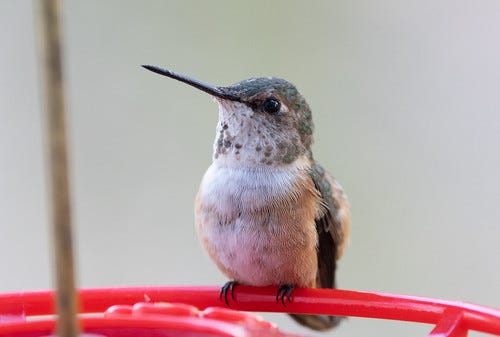
A lot of people assumed that a female Rufous Hummingbird who showed up at a feeder in Massachusetts in 1996 was doomed, but she re-appeared at that same feeder the following five winters.
I always worry about the vagrant birds I see—how can I not? By the very nature of its being a lone, out-of-range bird, we can’t help but see each one as an individual. I like to spend time with the birds I see, both in the field and then examining my photos, and see that spark of life in its eyes, the intelligence. I know this vulnerable being has real value as an individual beyond the value of its species.
But I also worry about the individual birds in my own backyard. When a chickadee with a deformed bill turned up at my feeder and started depending on me for live mealworms, taking them from my hand starting in December 2013, how could I not stay committed to protecting it? When I realized it also was missing its three front toes on one foot, that only heightened my concern and commitment. And when it attracted a mate and they fledged at least 5 babies in June 2015, I was filled with pride and joy.
Unless something very bad happens to the Parasitic Jaeger in Duluth that a birder witnesses or finds gruesome evidence of, we’ll almost certainly never know what becomes of it when it disappears. But hope is the thing with feathers.


